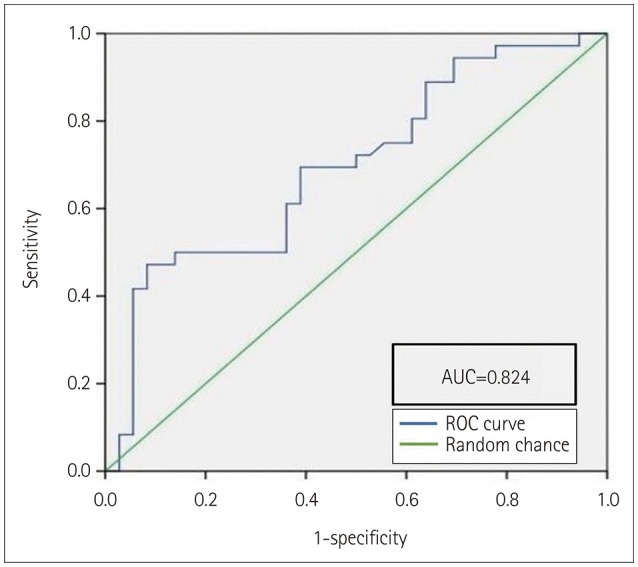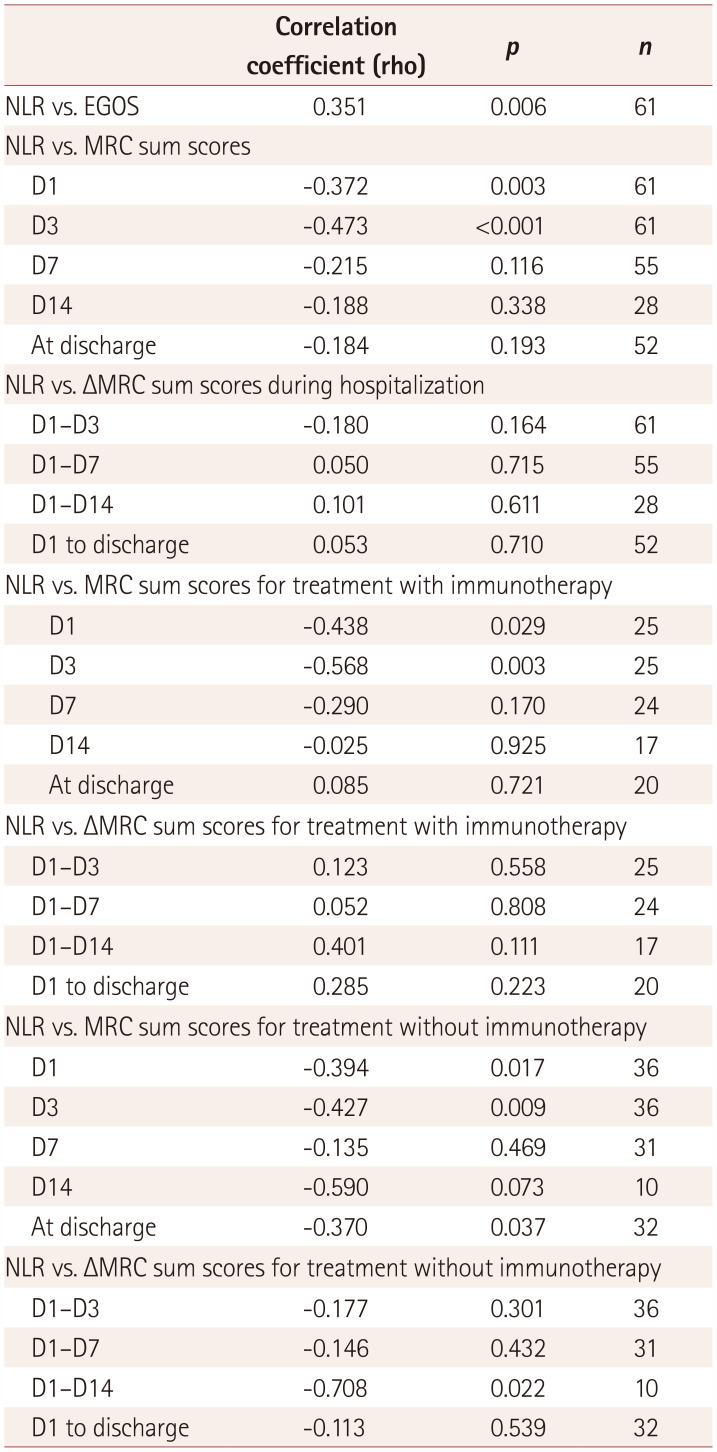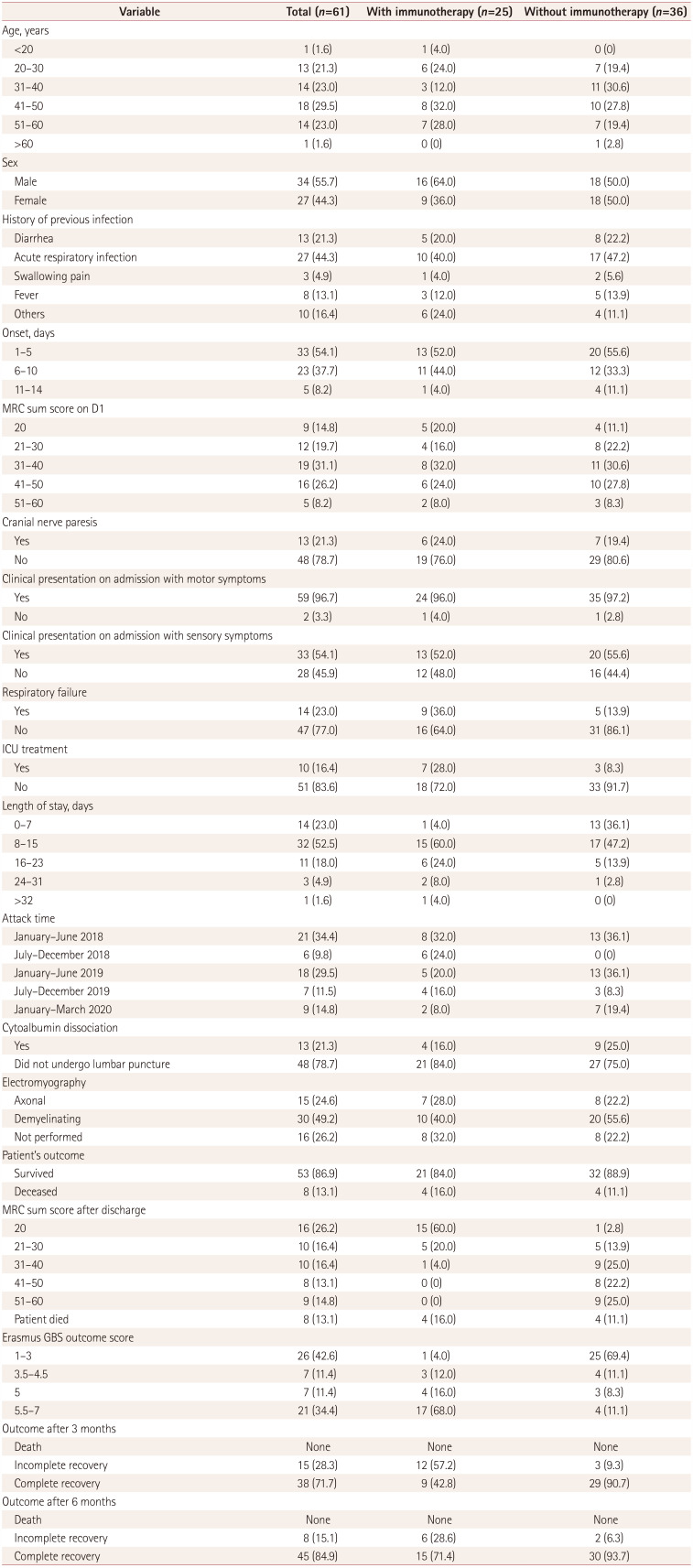Correlation Between Neutrophil-to-Lymphocyte Ratio and Motoric Deterioration in Patients With Guillain-Barre Syndrome.
引用次数: 0
Abstract
Background and Purpose Guillain-Barre syndrome (GBS) is a common cause of inflammation-related acute flaccid paralysis, and is characterized by acute onset, rapid progression, and symmetrical weakness. GBS is an emergency with high morbidity and long-term disability rates. It is important to determine the prognostic factors for GBS in order to improve the disease outcomes. This study aimed to identify the correlation between the neutrophil-to-lymphocyte ratio (NLR) on day 1 of hospitalization (D1) and motor deterioration in GBS patients. Methods This observational analytical study applied a cross-sectional analysis to the medical records of GBS patients who were hospitalized at Dr. Soetomo General Hospital Surabaya from January 2018 to March 2020. The analysis used the chi-square bivariate test, multivariate analysis with logistic regression, and correlation analysis with the Spearman test. Results The study included 61 subjects. Statistical tests showed that there was no correlation between NLR and changes in the Medical Research Council sum scores (ΔMRC sum scores) during D1–D3, D1–D7, D1–D14, and D1 to the day of discharge (p>0.05). There was a significant correlation between NLR and the Erasmus GBS outcome score (EGOS) (p=0.006). NLR values differed significantly within each treatment group (p=0.001). Therefore, a subanalysis within each treatment group was conducted, which revealed a significant negative correlation (p<0.05) between NLR and the ΔMRC sum score during D1–D14 in the group treated without immunotherapy. Conclusions There was no correlation between NLR and motor deterioration in patients with GBS during hospitalization. However, NLR was significantly correlated with EGOS, and there was a negative correlation between NLR and motor deterioration during D1–D14 in GBS patients treated without immunotherapy.



中性粒细胞与淋巴细胞比值与格林-巴利综合征患者运动功能恶化的关系。
背景和目的:格林-巴利综合征(GBS)是炎症相关性急性弛缓性麻痹的常见病因,其特点是发病急性、进展迅速、对称性虚弱。GBS是一种发病率高、长期致残率高的急症。确定GBS的预后因素对于改善疾病结局非常重要。本研究旨在确定GBS患者住院第1天中性粒细胞与淋巴细胞比值(NLR) (D1)与运动恶化的相关性。方法:本观察性分析研究对2018年1月至2020年3月在泗水Soetomo综合医院住院的GBS患者的医疗记录进行了横断面分析。分析采用卡方双变量检验,logistic回归多变量分析,Spearman检验相关分析。结果:纳入研究对象61例。经统计学检验,NLR与D1 ~ d3、D1 ~ d7、D1 ~ d14、D1 ~出院当日医学研究理事会总评分(ΔMRC)变化无相关性(p>0.05)。NLR与Erasmus GBS结局评分(EGOS)有显著相关性(p=0.006)。各治疗组NLR值差异有统计学意义(p=0.001)。因此,我们对每个治疗组进行亚分析,结果显示NLR与GBS患者住院期间运动恶化无相关性(p结论:NLR与GBS患者住院期间运动恶化无相关性。然而,NLR与EGOS显著相关,未接受免疫治疗的GBS患者D1-D14期NLR与运动恶化呈负相关。
本文章由计算机程序翻译,如有差异,请以英文原文为准。
求助全文
约1分钟内获得全文
求助全文

 求助内容:
求助内容: 应助结果提醒方式:
应助结果提醒方式:


